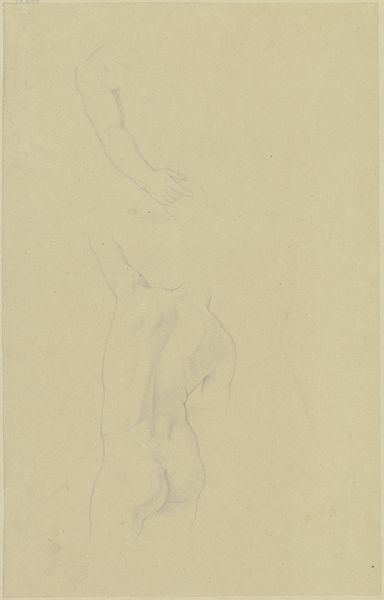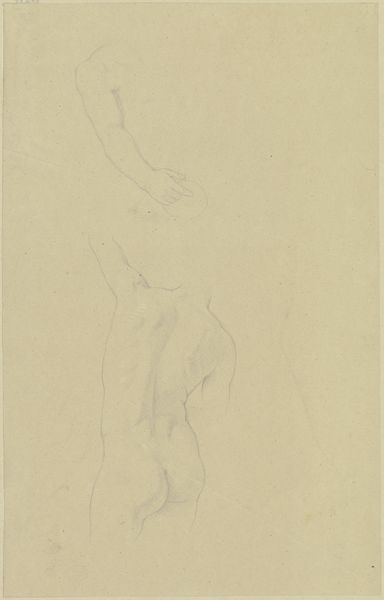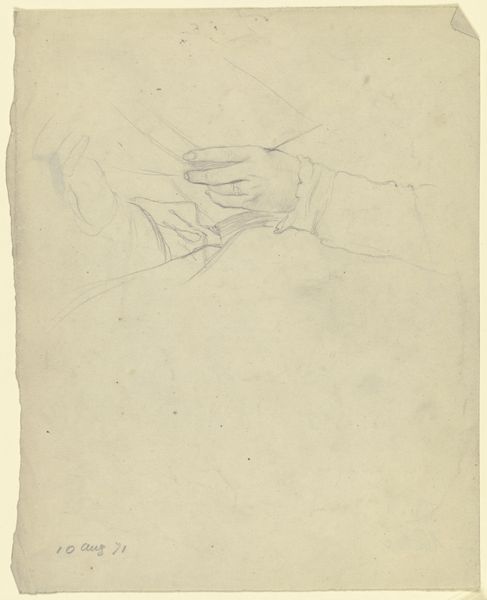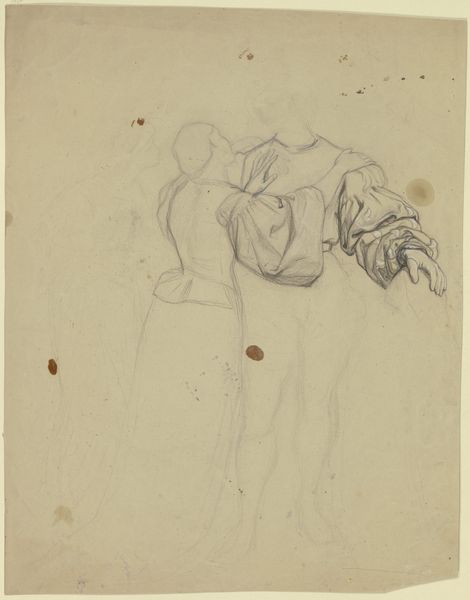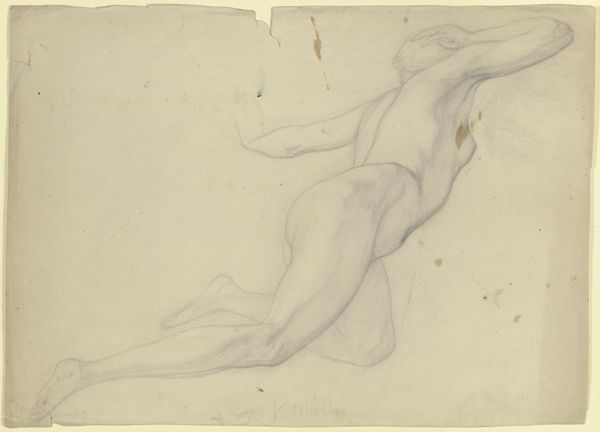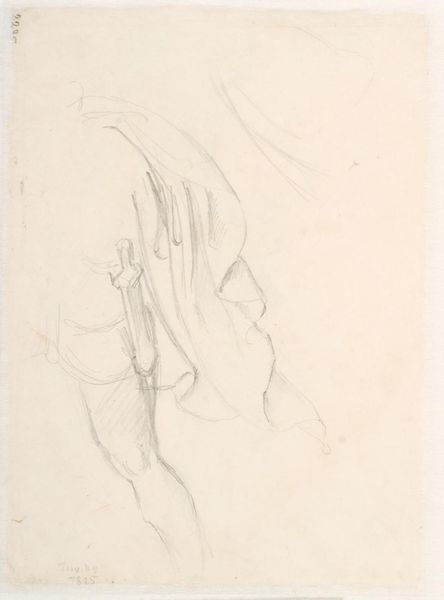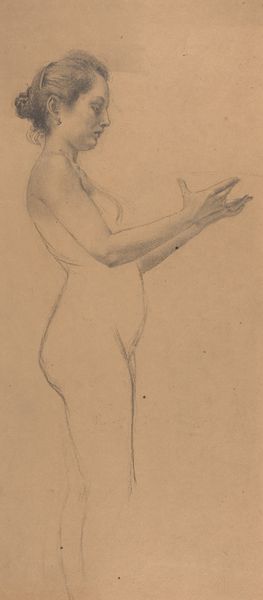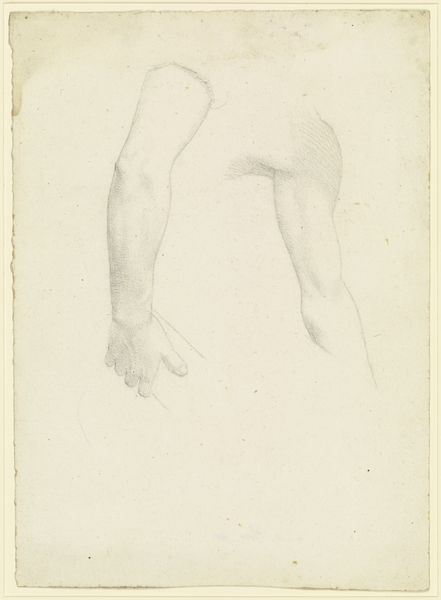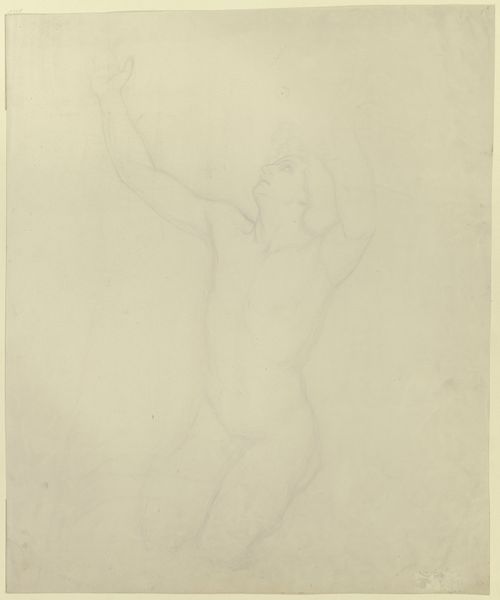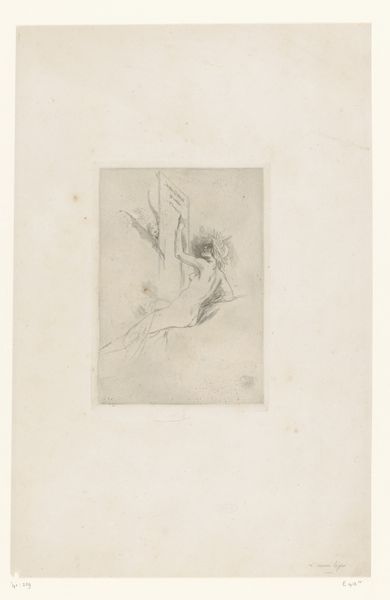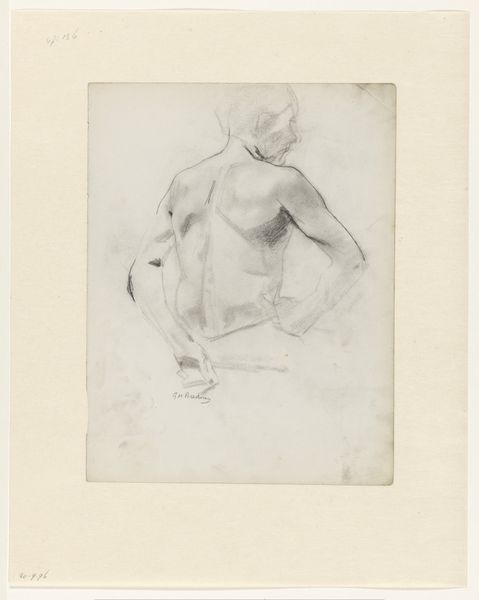
drawing, paper, charcoal
#
drawing
#
16_19th-century
#
figuration
#
paper
#
charcoal
#
nude
Copyright: Public Domain
Editor: This drawing, “Männlicher Akt, mit beiden Armen etwas von links ziehend” by Philipp Winterwerb, rendered in charcoal on paper, presents a fragment of the male torso and arms. It feels so academic, almost like an exercise in pure anatomical form. What can you tell me about it? Curator: The choice of charcoal is telling, isn’t it? It's a relatively inexpensive material, readily available. Here, it speaks to a certain pragmatism in art making. Consider the artist’s labor. It’s not about creating a precious object, but about the sheer act of observing and rendering, driven by materiality. It raises questions: where did the paper come from? How was it produced? Whose labor made that possible? Editor: That's a perspective I hadn't considered. I was too focused on the figure itself! Curator: Right. Now, what if the act of sketching the male nude was primarily about honing a craft, about mastering the representation of the human form as a type of production in and of itself. Would that alter how you see this drawing? Editor: I think it does! It makes it less about some idealized vision of the body, and more about the nuts and bolts of art making in a specific historical moment. Did this kind of drawing serve some particular purpose or need in the nineteenth century's art world? Curator: Absolutely. Think of the academy, of the demands placed on artists to demonstrate skill and proficiency. It becomes less about personal expression and more about fulfilling a social and economic function within the art system. So, what might it mean that this torso is disembodied, as a kind of synecdoche? Editor: Wow, I didn't expect such a deep dive into the process. I'm starting to see how focusing on the materials and the mode of production changes my whole understanding. Thanks! Curator: Exactly! Shifting the focus to the material conditions opens up the work, makes it a signifier for so much more than itself.
Comments
No comments
Be the first to comment and join the conversation on the ultimate creative platform.
